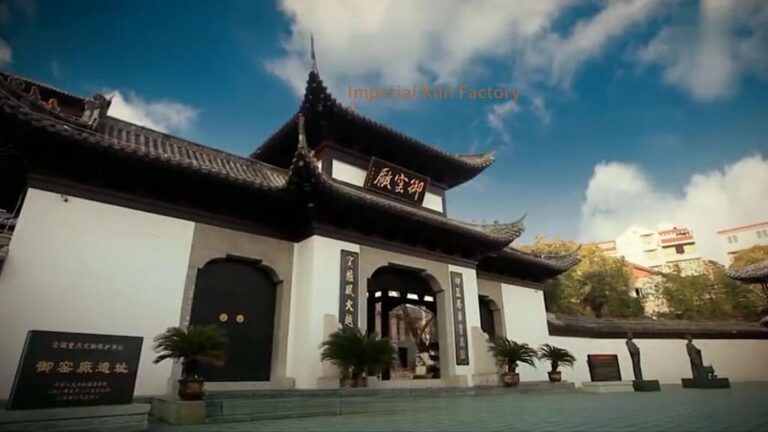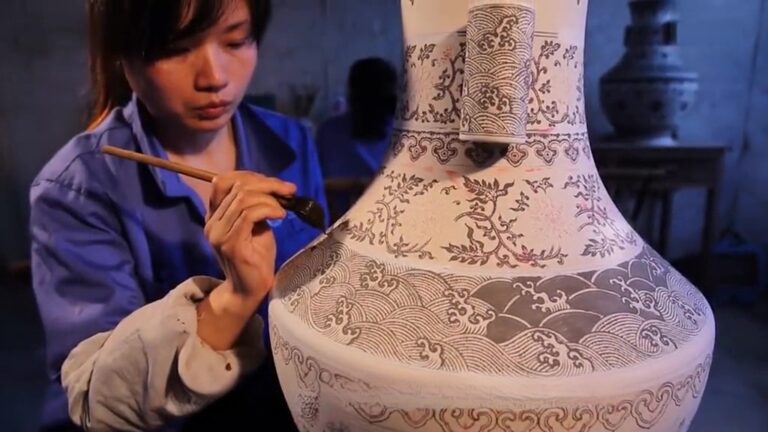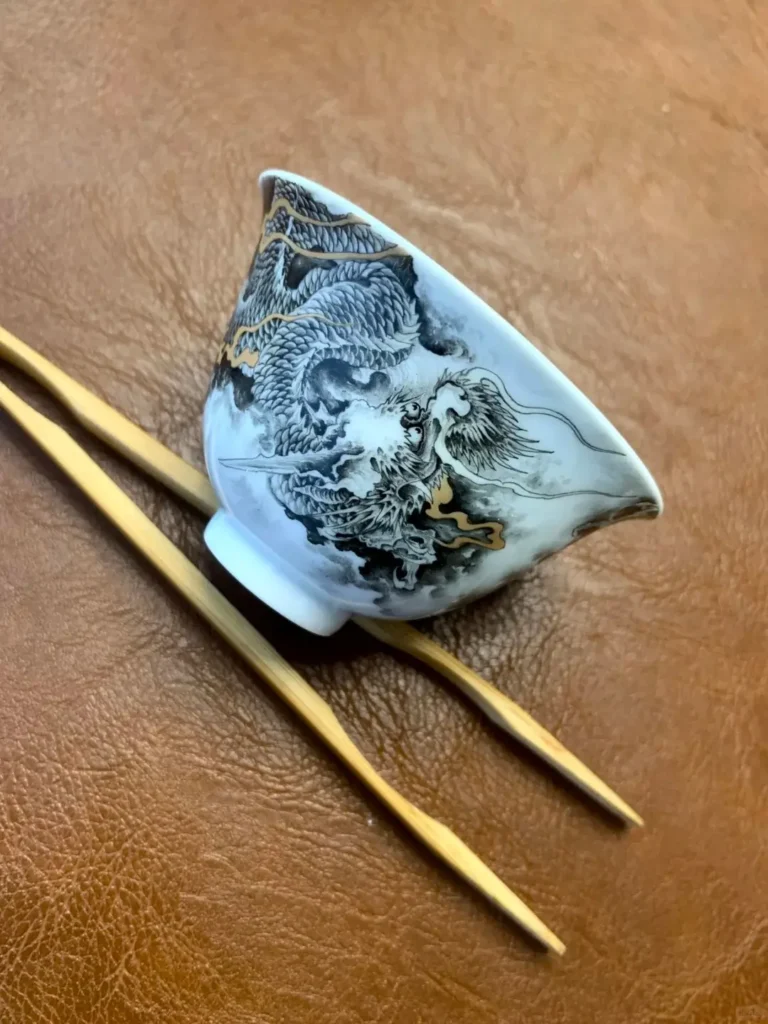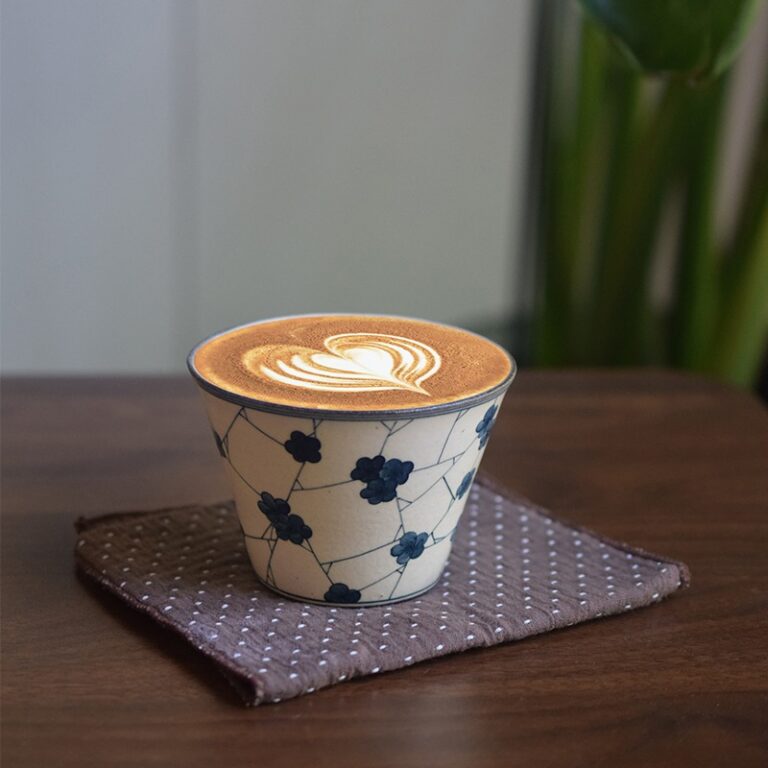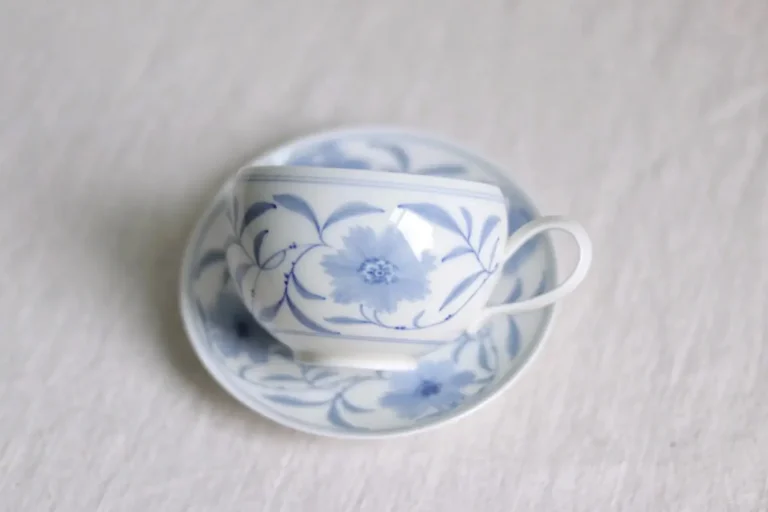Handmade ceramic shapes, presented through visual explanations, help people understand the mouth rim, handles,spout,shoulder, belly, foot, and handles. By observing these features, they grasp both the structural design and the visual language, which deepens appreciation for the rich cultural heritage of handmade ceramic shapes.
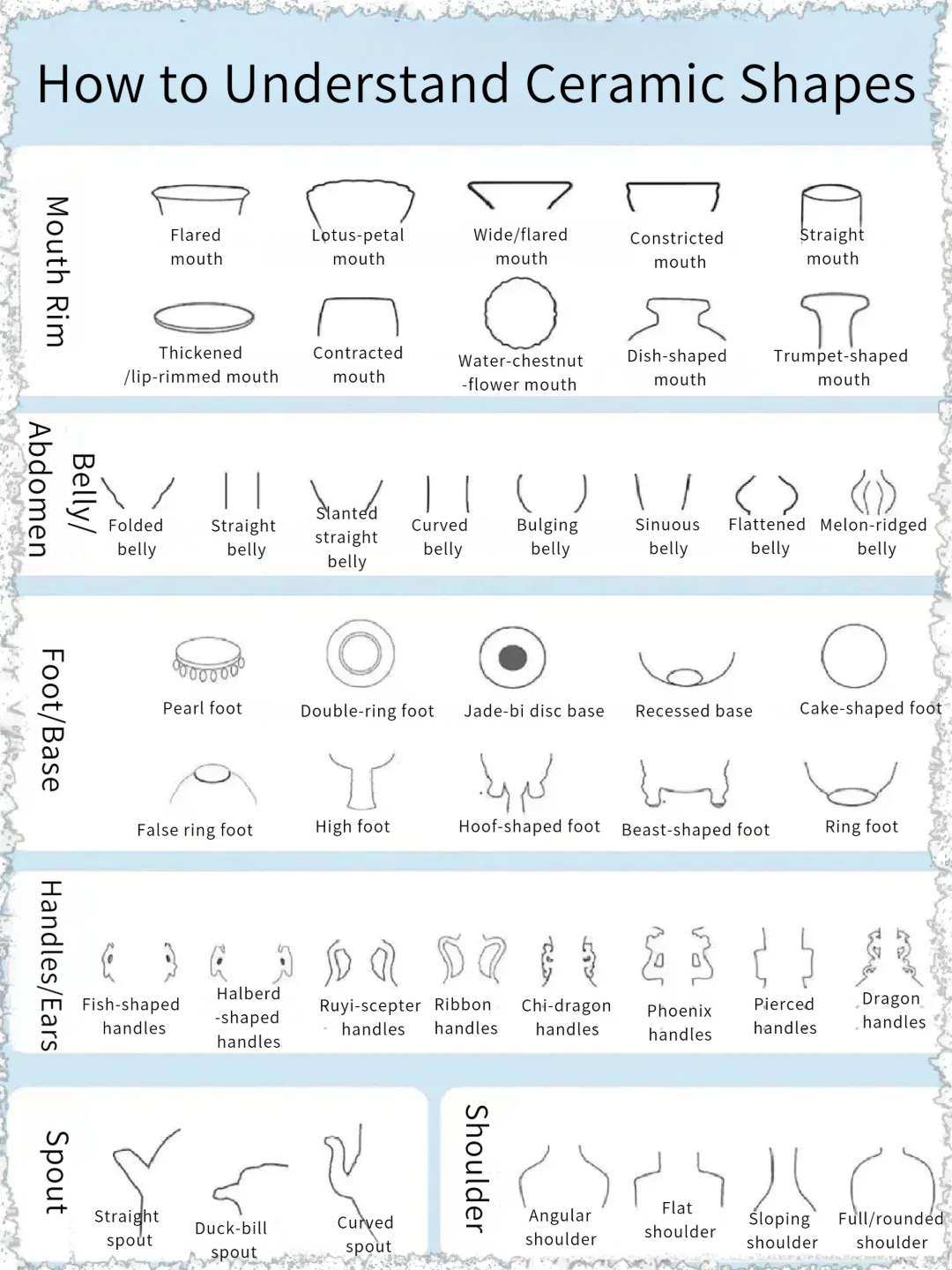
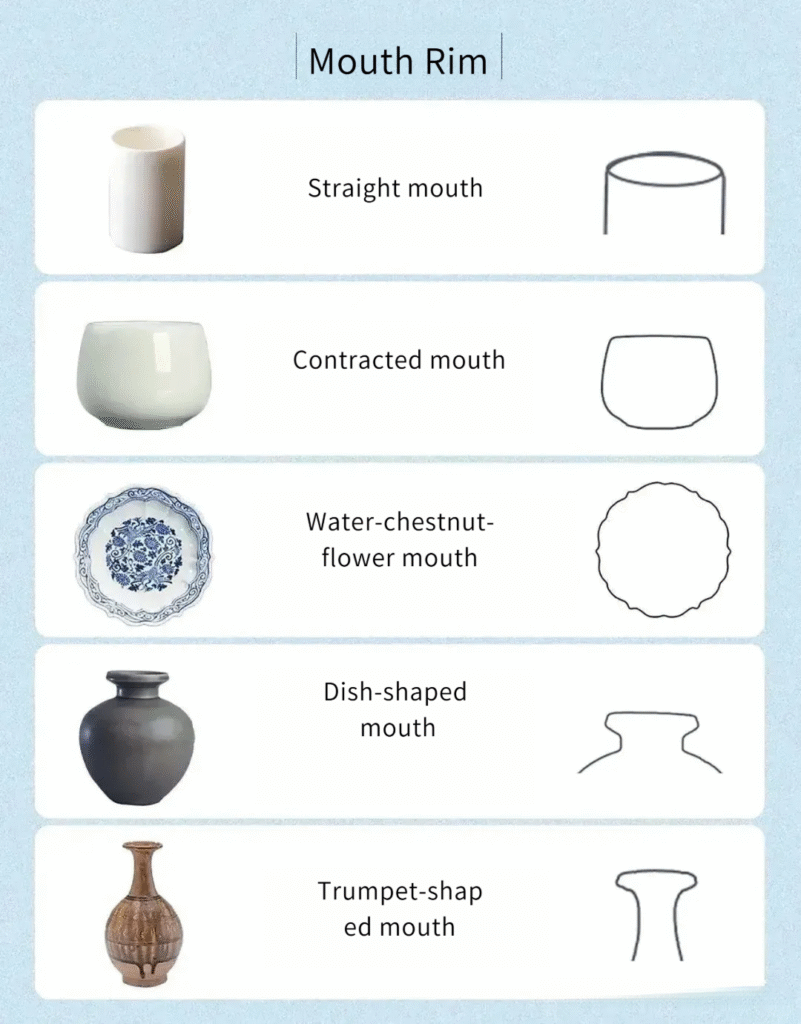
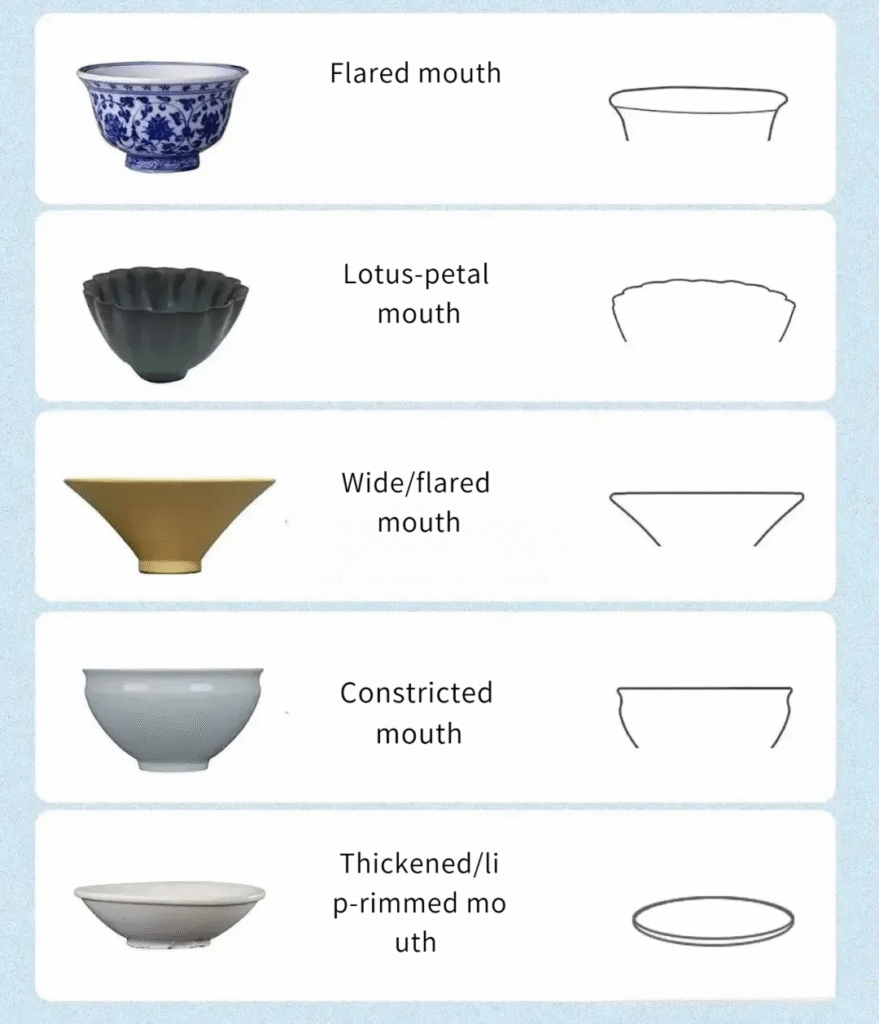
Handmade ceramic shapes–Mouth Rim
Straight mouth – The rim is vertically cylindrical with no variation.
Contracted mouth – The rim gradually curves inward, opposite of a flared mouth.
Water-chestnut-flower mouth – The rim is divided into petal-like sections by curved lines.
Dish-shaped mouth – Resembles a dish, with straight walls that fold inward, connecting to a narrower straight neck.
Trumpet-shaped mouth – A narrow neck gradually widens outward, resembling a trumpet.
Flared mouth – The rim curves slightly outward in a trumpet-like shape.
Lotus-petal mouth – The rim is divided into petal-like sections by curved lines (similar to 菱花口).
Wide/flared mouth – The rim expands outward, becoming wider toward the top.
Constricted mouth – The rim curves inward, forming a concave outer edge and a convex inner ridge.
Thickened/lip-rimmed mouth – The edge has a rounded, lip-like thickened rim.
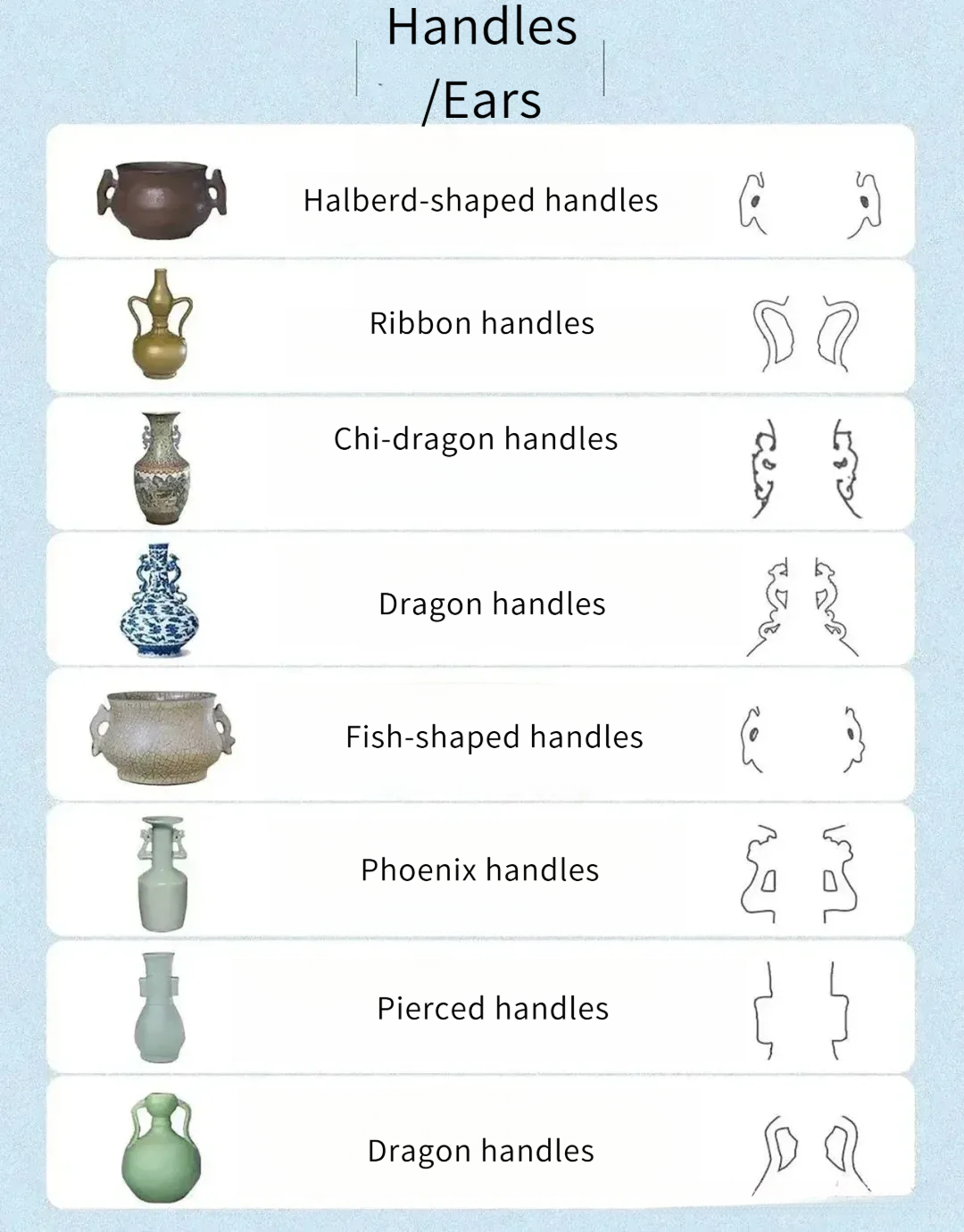
Handmade ceramic shapes–Handles/Ears
Halberd-shaped handles – Named for their resemblance to a halberd (a pole weapon), popular during the Ming and Qing dynasties.
Ribbon handles – Long, slender, and curved like a ribbon, commonly seen on double-gourd vases.
Chi-dragon handles – Shaped like a chi dragon, frequently found on Jingdezhen ware from the Ming and Qing periods.
Dragon handles – First appeared on Sui-Tang white porcelain and Tang sancai glazed pottery.
Fish-shaped handles – Earliest examples found on Ge ware and Longquan celadon; later appeared on Sui-Tang white porcelain and Tang sancai.
Phoenix handles – First seen on Longquan ware, symmetrically placed on both sides of the neck.
Pierced handles – Tubular and vertically attached to both sides of a vase’s straight neck.
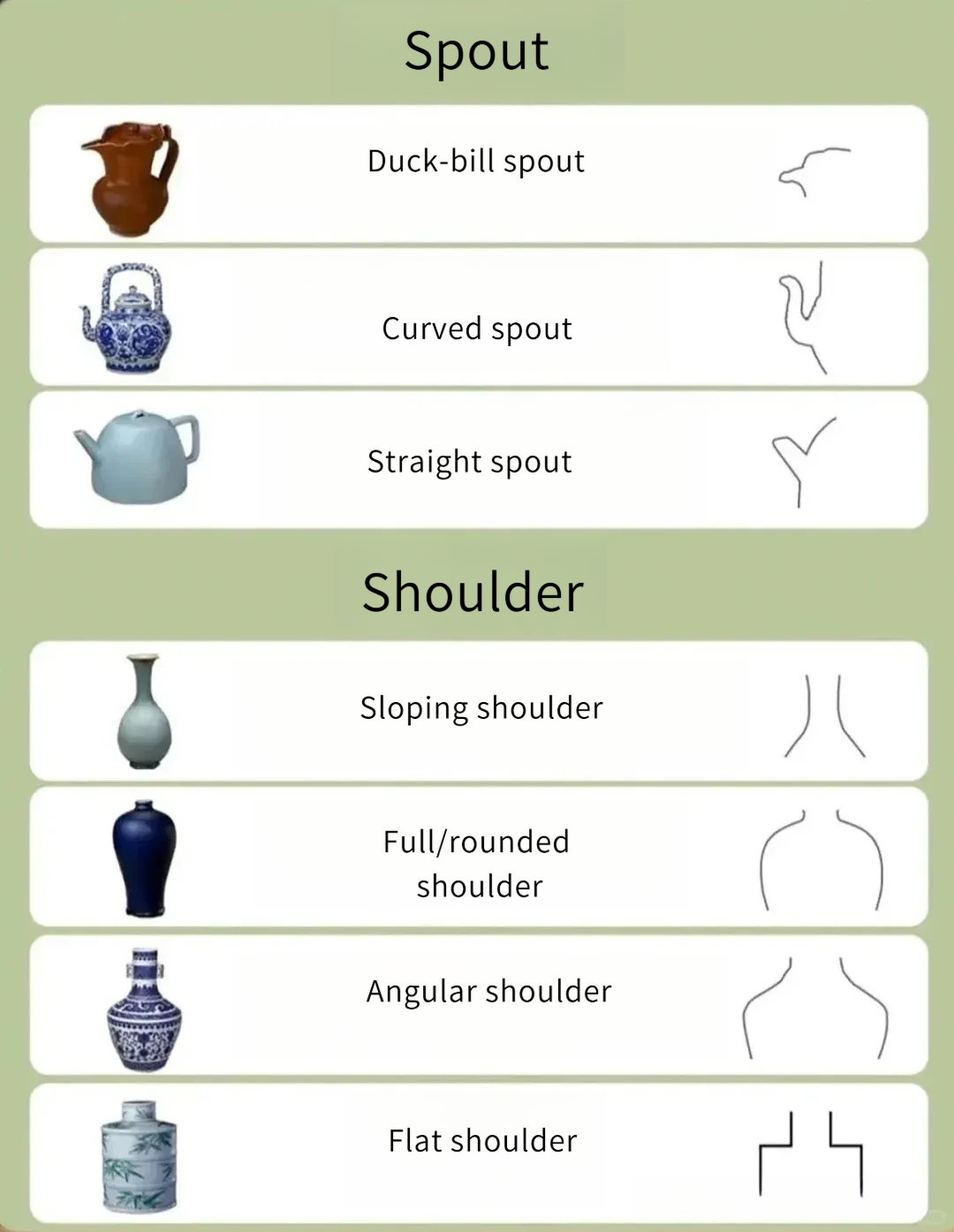
Spout
Duck-bill spout – The rim of a round vessel is elongated on one side, resembling a duck’s beak.
Curved spout – Slender and slightly S-shaped.
Straight spout – A straight tube, usually attached to the upper part or shoulder of the vessel, pointing diagonally upward.
Shoulder
Sloping shoulder – The shoulder slopes downward, blending smoothly into the belly.
Full/rounded shoulder – The shoulder is plump and rounded, rising prominently.
Angular shoulder – A sharp transition from shoulder to belly, forming a distinct angle.
Flat shoulder – The shoulder is a flat horizontal plane.
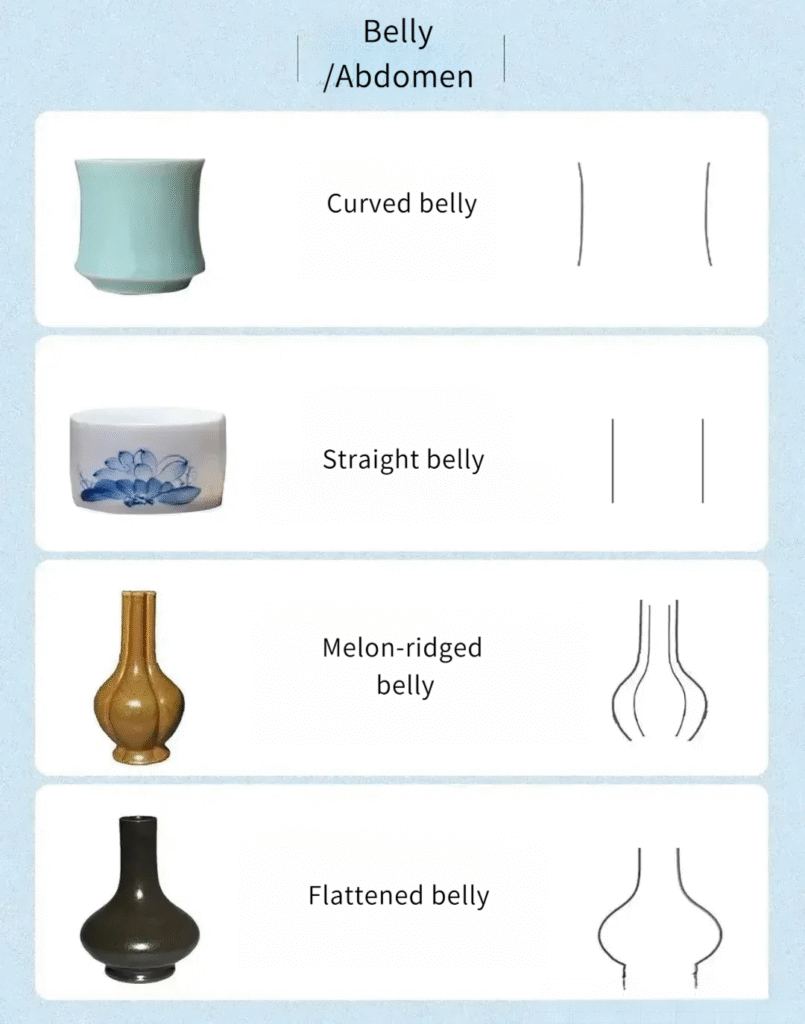
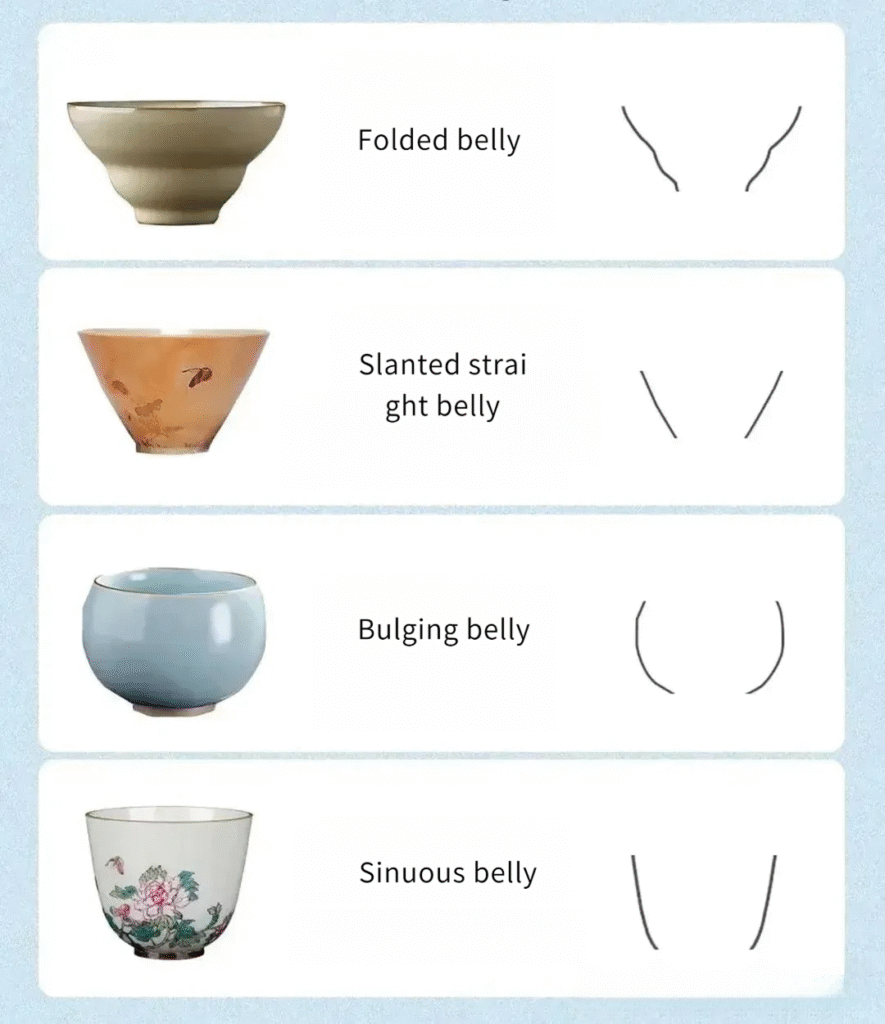
Belly/Abdomen
Curved belly – The waist and belly curve inward.
Straight belly – Perfectly vertical sides.
Melon-ridged belly – Often paired with a lobed mouth, with ridges extending from the rim to the foot, dividing the belly into melon-like segments.
Flattened belly – The cross-section is oval or flattened.
Folded belly – A sharp bend in the middle of the belly.
Slanted straight belly – Straight but not perpendicular to the foot.
Bulging belly – The belly protrudes outward.
Sinuous belly – The upper part is straight, while the lower part curves inward.
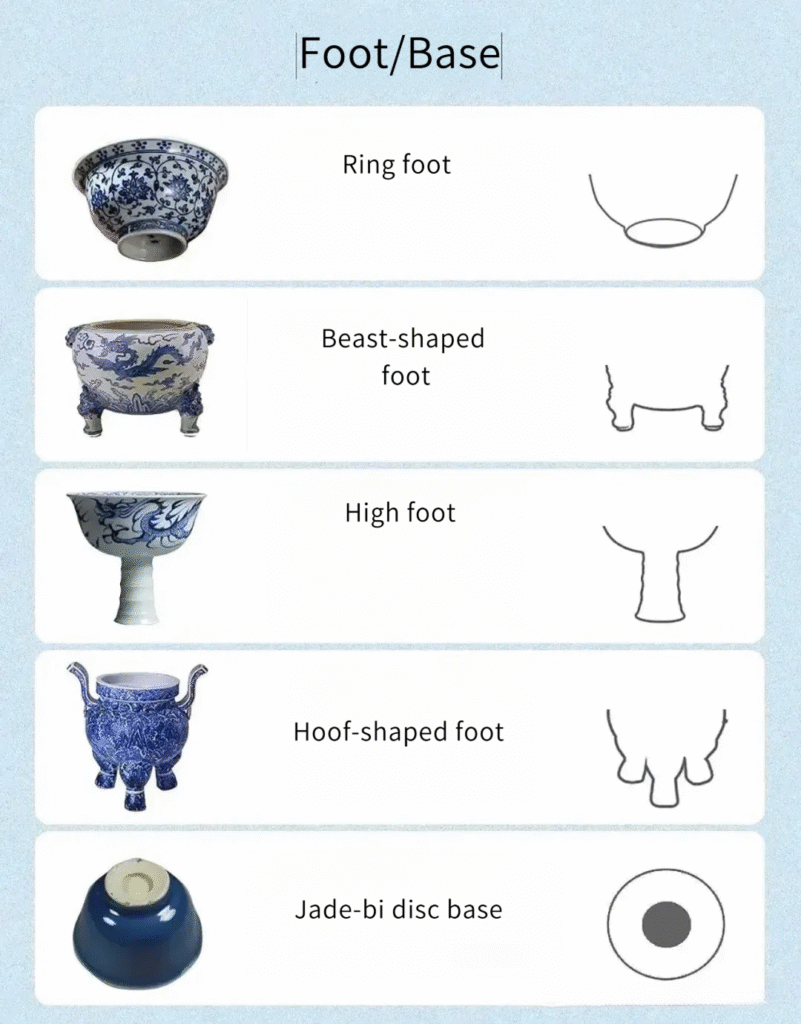
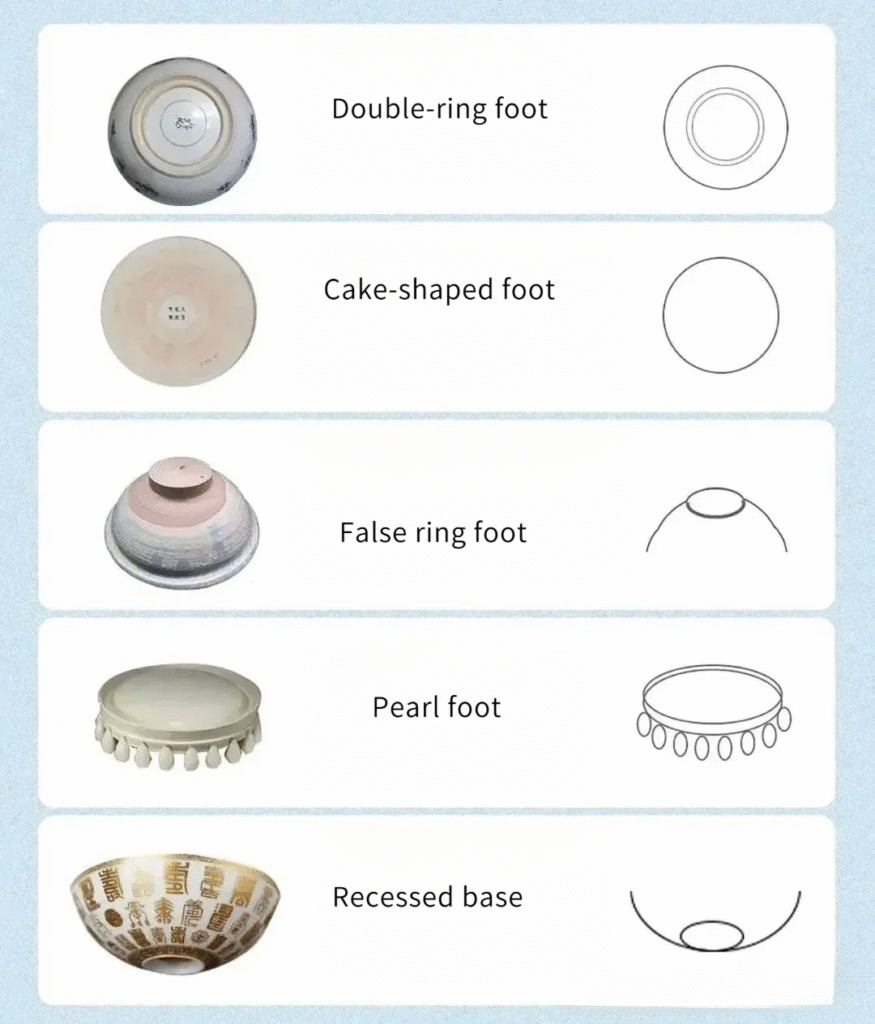
Foot/Base
Ring foot – A circular base that elevates the body (common in teacups).
Beast-shaped foot – Often seen on ceramic ding vessels, with a columnar foot decorated with an animal face where it meets the belly.
High foot – A bowl-like upper part with a tall stem.
Hoof-shaped foot – Resembles an animal’s hoof.
Jade-bi disc base – A flat circular base with a small concentric circle cut out, resembling a bi disc.
Double-ring foot – Two concentric ring feet, with the inner one shallower and supported by the outer one.
Cake-shaped foot – Flat and round, with the outer edge flaring outward.
False ring foot – Appears to have a ring foot but is either solid or has a barely noticeable base.
Pearl foot – The foot of a ceramic inkstone, composed of elongated grape-shaped beads.
Recessed base – No ring foot; the base is slightly concave inward.

